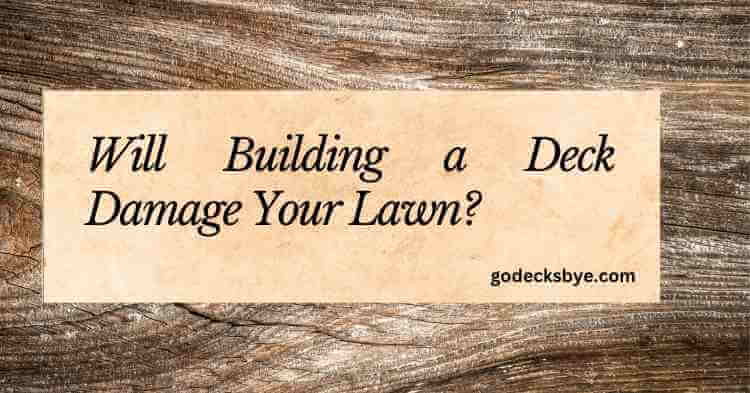Top 5 Horizontal Deck Skirting Ideas
In the case of deck skirting the traditional choice of lattice made from wood is the most popular choice. If you’re looking for more varied and imaginative ideas, you should consider investigating different materials to create an individual look. Horizontal Deck Skirting Ideas can be beautifully realized by adding simple vertical wood planks to your designs.
This flexible approach blends seamlessly with a variety of styles and designs, giving an elegant and sleek look in your backyard. When implementing this design, it’s essential to ensure proper airflow by creating gaps in the design between planks.
This is not just a way to ensure the long-term durability of your deck, but also permits adequate airflow and protects against the accumulation of moisture. Therefore, whether you’re looking to create a modern look or rustic appeal taking the idea of using horizontal wooden planks to form the deck’s skirting can provide a world of possibilities.
If your deck sits on an inclined surface, framed lattice provides an attractive yet accessible solution. Plus it keeps items such as ladders and tools out of view!
1. Farmhouse Style
If the design of your deck skirting reflects that of your home, farmhouse-inspired skirting may bring added charm. Usually made up of rustic materials with clean lines to achieve an eye-catching aesthetic that works on any house, lattice panels are often popular choices to give this style its signature charm; lattice can even be framed to give a more structured appearance for this type of skirting.
Lattice panels also keep out unwanted animals and help provide ventilation underneath decks for more efficient ventilation – making this option suitable for many homeowners.
One way to make this style even more appealing is by selecting darker materials, such as cedar. Cedar’s rustic charm works well with homes of various architectural styles, while also being durable enough to last over time.
For those living in modern homes, skirting may take on more of a polished appearance. When considering skirting options for your deck, such as slats or narrow wooden planks that add sleek contemporary lines. Or choose stone or brick skirting that matches the color of your house for a uniform appearance.
If your backyard slopes upward, your deck may need to be raised off of the ground than other parts. A trellis frame could be an ideal way to skirt your deck in this instance, serving both as an attractive and practical means of concealing the area underneath and encouraging plants to grow over it. Plus, wire mesh can act as an effective critter deterrent by discouraging any animals from burrowing under it!
2. Country Vibe
Skirting may not be the most exciting design element of a deck, but it still can provide an opportunity to accentuate its appearance. If you want to give your property an authentic country vibe, try opting for this simple yet country approach featuring vertical white slats with small gaps between each one, similar to those found on picket fences; it adds character and protects from unwanted animals coming underneath your deck by covering gaps.
For an updated twist on traditional slat ideas, take a look at this alternative that runs them horizontally instead. This creates a cleaner aesthetic and visually elongates the deck, giving the impression of larger dimensions. Perfect for modern and transitional-style houses alike; functional features include an access gate door for accessing underdeck areas so animals don’t accidentally damage it by seeking shelter there.
For a symmetrical and refined appearance, choose steel as your deck skirting material for added sophistication and symmetry. Steel blends beautifully with wood railings and deck boards while matching any color scheme of your house perfectly. Plus it can even be painted to complement it!
3. Modern
Modern horizontal deck skirting ideas can add a sleek and stylish feel to your home. Made from dark wood with light colors for an attractive contrast, they often include gate doors to protect against animals below. While not as sturdy built as some designs, modern horizontal deck skirting ideas are an excellent option for people seeking high-end looks.
Lattice style skirting is an attractive classic option for many homes, constructed either out of traditional wood or plastic materials. Its distinctive crisscross pattern can complement various architectural styles and color schemes; making it the ideal addition for backyard decks as it allows airflow while concealing tools or equipment from view.
Stone brick skirting can make a fantastic addition to a backyard deck, especially if your deck has to span over difficult terrain or has an unusual angle. The stones will blend perfectly into your house’s aesthetic while adding natural charm; these stones also work great for front porches!
For maximum utility in your garden space beneath your deck, consider investing in recessed skirting. This will enable you to add more plants into the space as well as more storage capacity – or use it as a place to display decorative rocks!
4. Painted
White deck skirts don’t run vertically like lattice panels – instead, these white deck skirts run horizontally to evoke modernity and visually extend your deck while giving it extra space. Their simple design works well with homes of various styles like traditional or farmhouse.
This slat-style option takes contemporary design a step further by being painted to blend seamlessly into deck trim and siding, offering seamless visual harmony for homes with other white outdoor features such as screened porches or fences. Slats are spaced apart enough for ventilation without hampering functionality of the deck.
Composite board designs make an elegant and functional choice for deck skirting. Reminiscent of wood, they can be stained to blend in or painted for an eye-catching contrast – this example makes an excellent addition to modern farmhouse-style homes because both components complement each other well.
Cedarwood decks are a classic look that pair well with rustic and farmhouse-style homes, and this example takes matching materials a step further by including dark hued cedar in both handrail and support, for an integrated vision.
Frequently Asked Questions about Horizontal Deck Skirting Ideas
1. What is horizontal deck skirting, and why is it important for my deck?
Horizontal deck skirting is the design or material used to protect the area underneath a deck. It is used for both functional as well as aesthetic reasons. Functionally, it assists in hiding the structure and utilities under the deck while increasing the airflow. It also adds aesthetic attractiveness to outdoor spaces, and is a perfect complement to the overall style of your deck.
2. What are some popular materials for horizontal deck skirting?
Many types of materials can be used to create horizontal deck skirting. Each has distinct appearance and a certain amount of toughness. The most popular choices are:
- wood: Wood that is natural can create a warm and rustic appearance. Redwood, redwood and pressure-treated lumber are popular choices.
- Composite Materials made of composite offer minimal maintenance, and are available in many shades and textures that resemble wood.
- Metal Panels made of metal, like steel or aluminum, can create a modern and elegant look.
- Vinyl Vinyl skirting is robust, water-resistant, and is available in various designs, some of which look like wood.
3. How do I choose the right design for my horizontal deck skirting?
Picking the best style for the horizontal deck skirting is contingent on your personal preferences as well as the overall design of your home, as well as the structure of your deck. Here are some suggestions:
- Take a look at the aesthetics: Decide whether you would like a traditional contemporary or rustic appearance.
- Match the deck Make sure you match the skirting style to your deck’s color, materials and railing design.
- Security and airflow The balance between with the requirement for privacy and adequate ventilation to avoid condensation of moisture under the deck.
- Complete landscaping Incorporate the design of skirting with the landscaping elements to create a cohesive outdoor space.
4. Are there any regulations or guidelines for installing horizontal deck skirting?
Deck skirting regulations vary by location as well as may be determined by local construction codes. The most common guidelines include:
- Ventilation Make sure that the ventilation is adequate to prevent moisture and mold problems. There should be gaps in the skirting boards to allow air circulation.
- High: Check local codes to determine the minimum and maximum requirements for skirting.
- Access In the event that your skirting includes doors for access, they should be in compliance with the fire safety standards and fire egress requirements.
- Material: Confirm if certain materials are restricted because of dangers from fire or other safety issues.
5. Can I incorporate additional features into my horizontal deck skirting?
Absolutely! The horizontal deck skirting can be enhanced by a variety of options to improve both function and appearance. Take a look at these possibilities:
- Built-in seating: Integrate benches or seating areas inside the skirting to provide additional ease and comfort.
- Storage Make hidden storage under the deck to store things like gardening tools, and outdoor furnishings.
- decorative accents: Add lattice panels or cut-out designs, or decorative screens to boost the aesthetic appeal.
- Lights: Place lighting sources around the skirtings to light the area and create a warm ambience.
Make sure you consider your personal needs and preferences when adding extra features to the horizontal deck skirting style.
You may read article about:








2 Comments